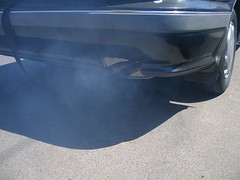1st International Summit on the State of the Connected Vehicle – April 16-17 – Detroit
The Connected Vehicle Trade Association in conjunction with the Michigan Department of Transportation and SAE International is hosting The FirstInternational Summit on the State of the Connected Vehicle with a Primary Focus on Policy and Strategy for Deployment. The first day will emphasis policy,funding, issues and strategies to accelerate deployments regionally andinternationally, and the second half day will address near term business opportunities. The Summit will be held on April 16-17, 2009 at Cobo Hall inDetroit, Michigan. The Summit brings together senior executives and policy officials fromgovernment and industry with responsibility for the deployment and operation ofConnected Vehicle programs systems and products. Presenters from Europe,Asia and North America will provide perspectives from their respectiveregions. In addition, major corporate business leaders from automotive companies, the technology supplier community and communication companieswill discuss the business and partnering opportunities in this rapidly evolving environment. This event will bring together the international public and private sector leadership with responsibility for deployment in the connected vehicle environment.
For more information, visit: http://www.sae.org/events/scv/








 President Obama and Vice President Biden spoke with Transportation Secretary Ray LaHood Tuesday at Transportation Department headquarters, where they announced the first batch of stimulus funds getting distributed. In an interview with The Wall Street Journal, Mr. LaHood talked about spending stimulus money wisely, his opposition to an increase in the gasoline tax, new fuel emission standards and more. Below are edited excerpts from the interview.
President Obama and Vice President Biden spoke with Transportation Secretary Ray LaHood Tuesday at Transportation Department headquarters, where they announced the first batch of stimulus funds getting distributed. In an interview with The Wall Street Journal, Mr. LaHood talked about spending stimulus money wisely, his opposition to an increase in the gasoline tax, new fuel emission standards and more. Below are edited excerpts from the interview.

